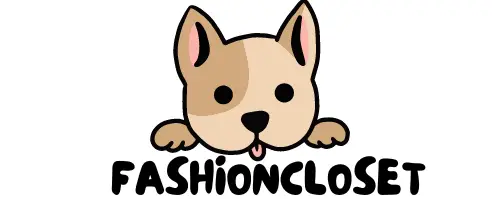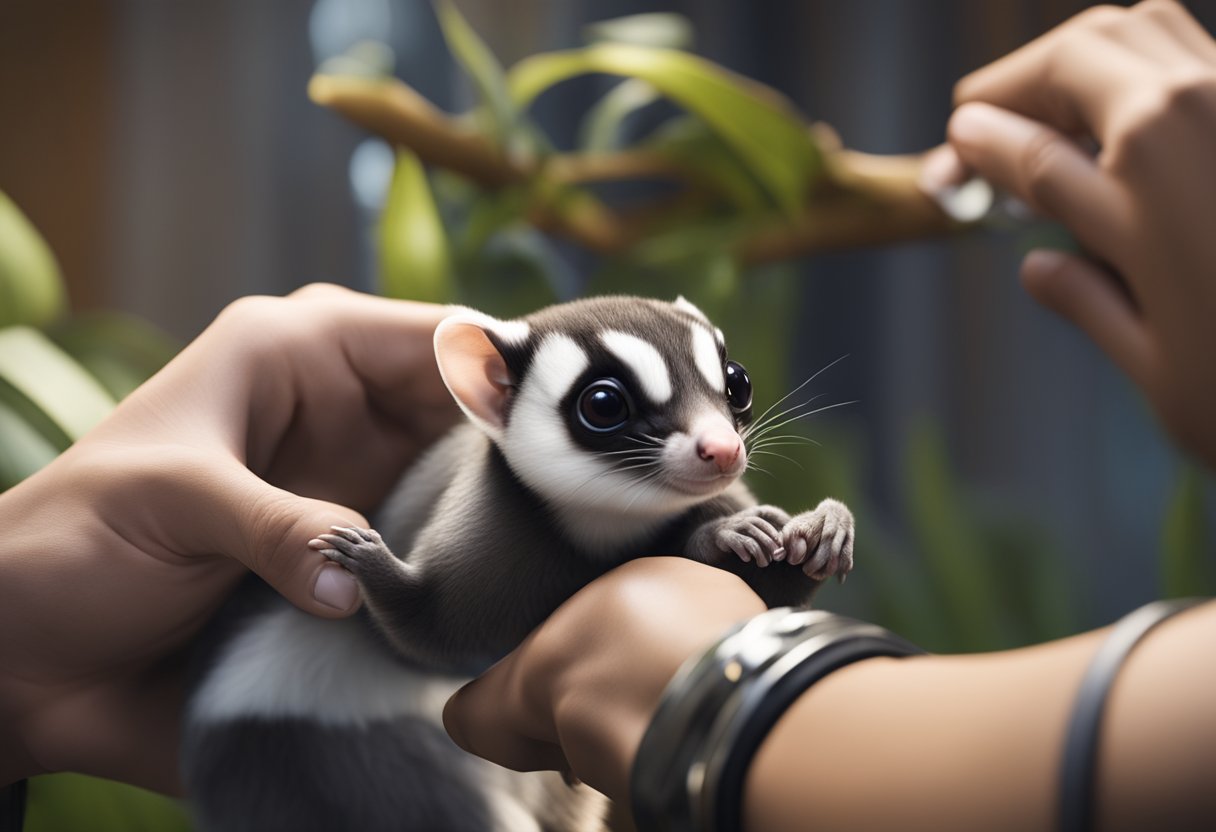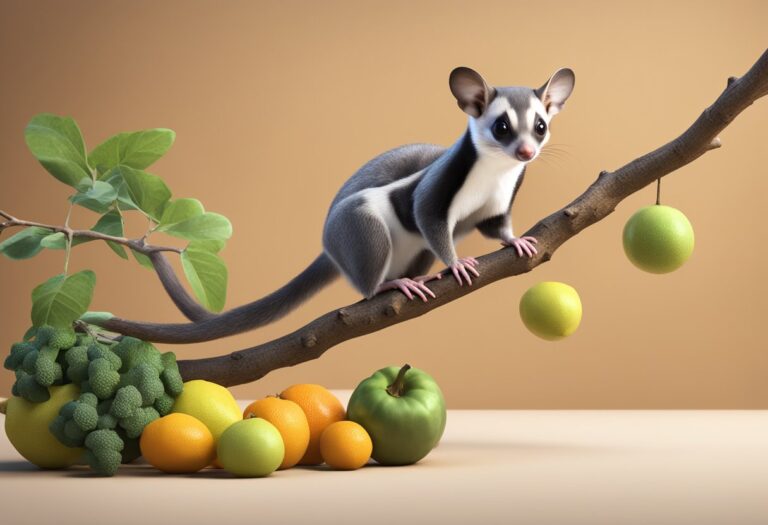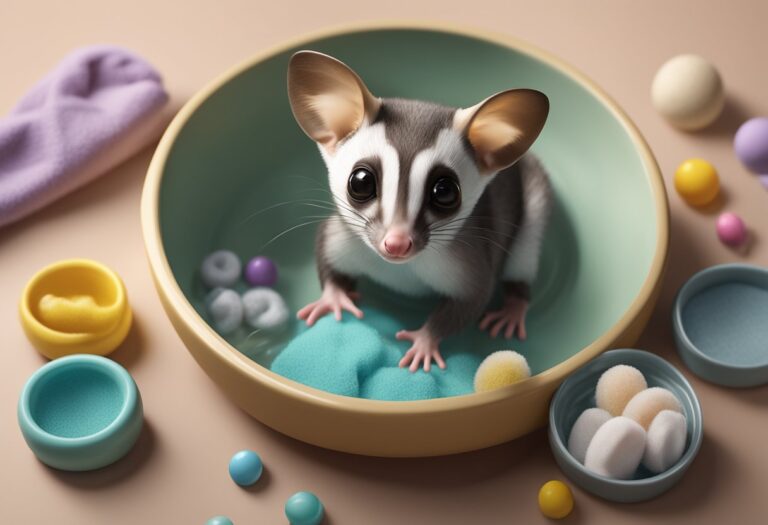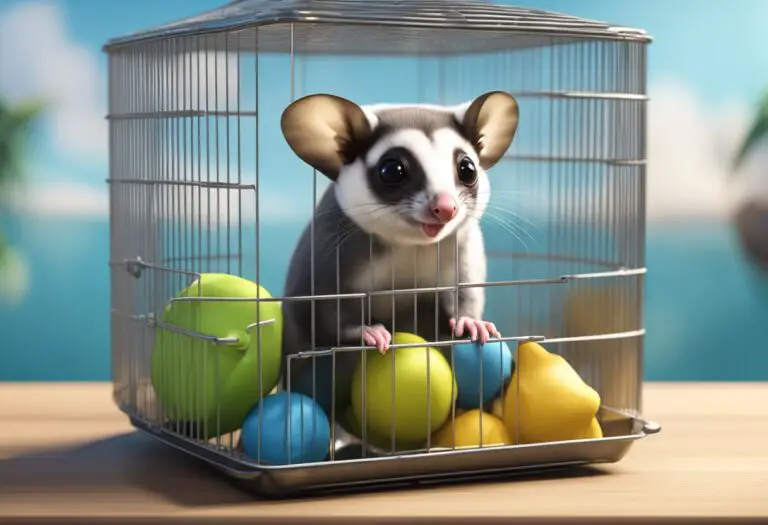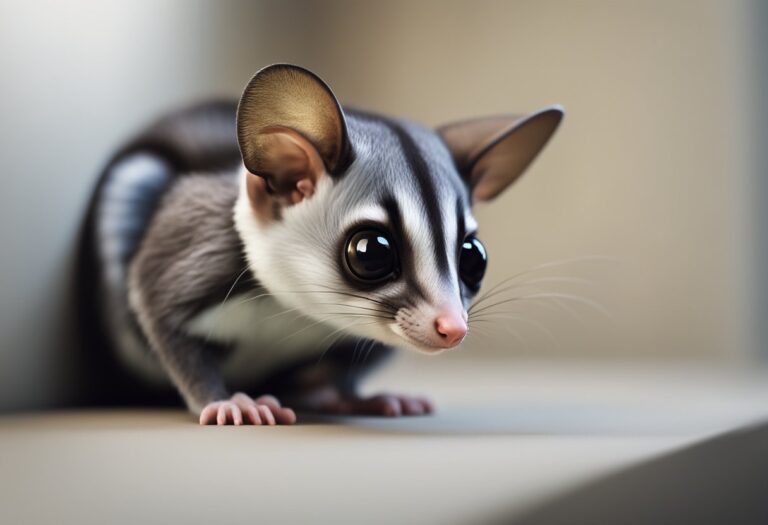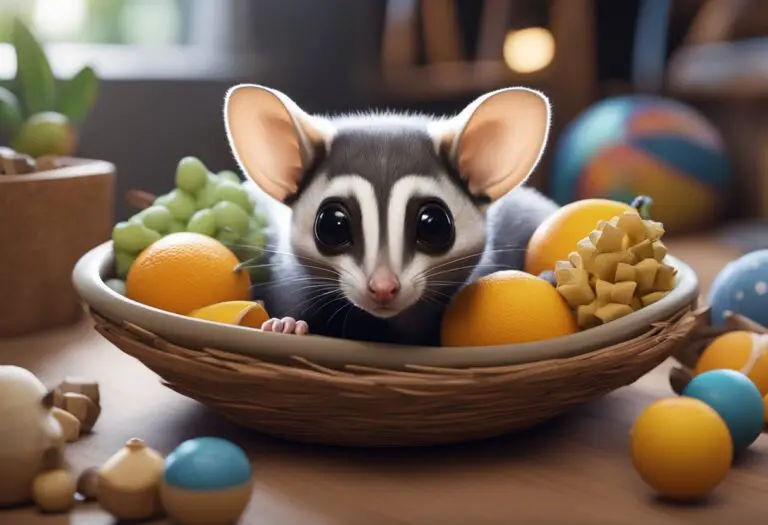Sugar Glider Claw Trimming: A Safe and Effective Guide
Are you a proud sugar glider owner wondering how to keep your pet’s claws in top shape? Look no further! This comprehensive guide provides you with the knowledge and steps to safely and effectively trim your sugar glider’s claws, ensuring their overall health and well-being. By following the tips outlined in this article, you’ll be able to confidently groom your sugar gliders’ paws, preventing potential issues and promoting their comfort and mobility.
Understanding the Importance of Proper Claw Care
Regular sugar glider claw trimming is essential for maintaining the health and well-being of these unique pets. Proper claw care is crucial to ensuring their paws remain functional and comfortable, allowing them to thrive in their environment.
Why Trimming is Necessary
Sugar gliders’ claws, also known as sugar glider nails, grow continuously throughout their lives. If left untrimmed, these sugar glider claws can become overgrown, leading to a range of issues that can impact their overall health and mobility. Regular nail clipping helps to maintain the optimal length and shape of their sugar glider paws, ensuring they can move freely and engage in their natural behaviors without difficulty.
Potential Risks of Overgrown Claws
Neglecting sugar glider claw trimming can result in a variety of problems, including difficulty in movement, increased risk of injury, and the potential for ingrown nails or infections. Overgrown sugar glider claws can catch on surfaces, causing discomfort and making it challenging for the animal to navigate its surroundings. This can lead to a decline in activity levels and overall sugar glider claw overgrowth prevention, ultimately affecting the pet’s quality of life.
By understanding the importance of proper sugar glider paw maintenance and regularly trimming their nails, owners can help ensure their sugar gliders remain healthy, active, and comfortable in their care.
Preparing for the Claw Trimming Process
Ensuring a successful and stress-free sugar glider claw trimming session starts with proper preparation. From gathering the right tools to creating a comfortable environment, these steps are crucial for the overall well-being of both the pet and the owner.
Gathering the Right Tools
The foundation of effective sugar glider nail clipping lies in having the appropriate tools on hand. Invest in a high-quality pair of sharp, precision sugar glider claw trimming scissors or clippers to ensure a clean and accurate cut. Additionally, keep styptic powder nearby to stop any potential bleeding should you accidentally cut the sugar glider’s nails too short.
Creating a Comfortable Environment
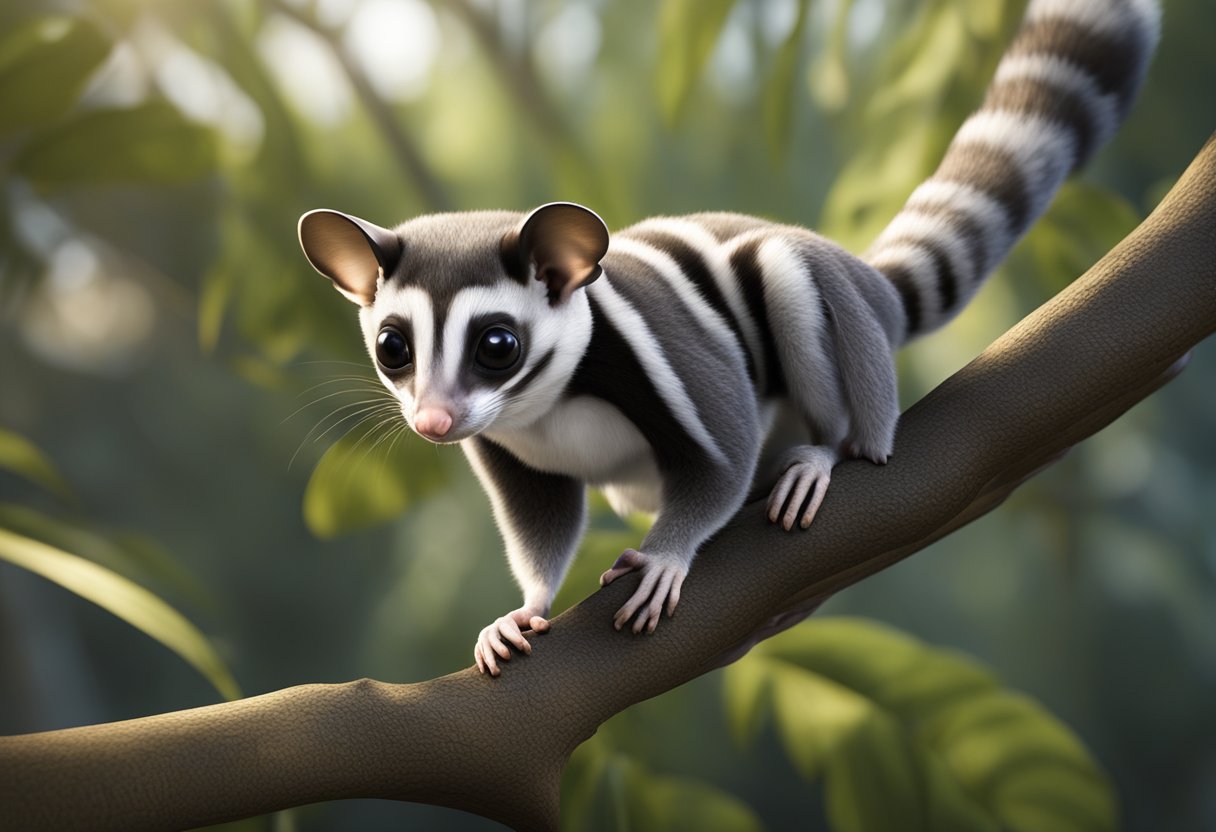
To ensure a stress-free safe claw trimming for sugar gliders, it’s essential to create a calm and comfortable environment. Choose a well-lit, quiet area free from distractions or loud noises. Gather the necessary supplies and have them within reach, so you can focus solely on the proper sugar glider nail trimming techniques without interruption. Maintain a gentle, soothing tone and be patient throughout the sugar glider grooming process.
Sugar Glider Claw Trimming Techniques
Proper handling and restraint are crucial when trimming a sugar glider’s claws. To keep your pet calm and secure, gently wrap them in a soft towel, leaving only their paws exposed. This helps minimize stress and ensures a smooth grooming session.
Identifying the Quick
Before trimming the claws, it’s important to identify the quick, which is the blood vessel within the claw that should be avoided. Examine your sugar glider’s claws closely, and look for the pink or reddish area near the base of the nail. This is the quick, and you’ll want to leave a small portion of the claw beyond it to prevent any bleeding or discomfort.
Trimming the Claws Safely
When trimming the sugar glider’s claws, use high-quality, sharp nail clippers designed specifically for small animals. Gently hold the paw, and carefully snip the nail just beyond the quick, avoiding the sensitive area. Be sure to take only small, incremental cuts to avoid cutting too close and causing injury.
If you do accidentally cut the quick and experience bleeding, apply a small amount of styptic powder or cornstarch to the affected nail to help stop the bleeding. This will ensure a safe and comfortable grooming experience for your sugar glider.
By following these proper sugar glider claw trimming techniques, including proper handling and restraint, identifying the quick, and trimming the claws safely, you can confidently and responsibly groom your pet’s paws, promoting their overall health and well-being.
Aftercare and Maintenance
After successfully trimming your sugar glider’s claws, it’s essential to monitor the pet’s paws for any signs of bleeding or infection. This crucial step ensures the pet’s comfort and prevents potential complications that could arise from the grooming process.
Monitoring for Bleeding or Infection
Immediately after trimming the sugar glider’s claws, examine the paws for any signs of bleeding. If you notice any, apply a small amount of styptic powder or cornstarch to the affected area to help stop the bleeding. Closely observe the paws over the next few hours and days, looking for any redness, swelling, or other indications of infection. Should you notice any of these symptoms, consult your veterinarian promptly to ensure proper treatment and a speedy recovery.
Providing Appropriate Surfaces for Claw Wear
To maintain the health and natural wear of your sugar glider’s claws, it’s important to provide appropriate surfaces for them to climb and grip. Incorporate a variety of textures, such as smooth branches, rough tree bark, and sturdy, vertical surfaces, into the sugar glider’s enclosure. This allows the claws to wear down naturally, preventing overgrowth and the need for frequent trimming. Regularly monitor the claw length and trim as necessary to ensure your sugar glider’s paws remain in optimal condition.
| Aftercare Consideration | Importance | Recommended Actions |
|---|---|---|
| Monitoring for Bleeding | Prevents complications and ensures the pet’s comfort | Apply styptic powder or cornstarch to stop bleeding; closely observe for any signs of infection |
| Providing Appropriate Surfaces | Promotes natural claw wear and reduces the need for frequent trimming | Incorporate a variety of textures, such as smooth branches, rough tree bark, and sturdy vertical surfaces, in the sugar glider’s enclosure |
Dealing with Difficult Sugar Gliders
While sugar glider claw trimming is an essential part of their grooming routine, some sugar gliders may be more resistant to the process. This can make it challenging for owners to complete the task safely and effectively. However, with the right strategies and techniques, even the most skittish sugar gliders can be managed during the sugar glider nail clipping session.
One key approach is to create a calming and familiar environment for the sugar glider. Ensure the grooming area is quiet, with minimal distractions and comforting items, such as their favorite toys or perches. Gradually acclimate the sugar glider to the process by introducing the tools and handling techniques gradually, allowing them to become comfortable with the experience.
When it comes to the actual safe claw trimming for sugar gliders, consider enlisting the help of a second person to assist with restraint and distraction. One individual can gently hold the sugar glider in a secure, yet comfortable position, while the other focuses on the delicate sugar glider grooming task at hand. This teamwork approach can help minimize stress and increase the chances of a successful trimming session.
Additionally, be patient and take breaks as needed. Some sugar gliders may require multiple short sessions to become accustomed to the process, rather than attempting a single, prolonged grooming session. By respecting the sugar glider’s comfort level and adjusting the approach accordingly, owners can ensure the sugar glider claw trimming is a positive experience for both the pet and the caretaker.
Sugar Glider Claw Trimming: Best Practices
To maintain optimal paw health for your sugar gliders, it is crucial to follow best practices when it comes to claw trimming. This includes understanding the recommended frequency of trimmings as well as when it’s appropriate to seek professional assistance.
Frequency of Trimmings
Sugar glider claws typically require trimming every 4-6 weeks, depending on the individual pet’s needs and activity level. Overactive or active sugar gliders may need more frequent trimmings, while less active pets can often go slightly longer between sessions. Regularly monitoring your sugar glider’s claws and trimming them before they become excessively long is key to preventing potential issues such as ingrown nails or difficulty in movement.
Seeking Professional Assistance
While many experienced sugar glider owners can confidently trim their pets’ claws at home, there are some instances when it’s best to seek the help of a professional groomer or veterinarian. If you’re new to sugar glider claw trimming, or if your pet is particularly skittish or difficult to handle, it may be safer and more efficient to have a trained professional perform the grooming. Additionally, if you notice any signs of infection, bleeding, or other health concerns related to your sugar glider’s claw care or paw maintenance, it’s advisable to consult with a veterinarian who can provide expert guidance and necessary medical treatment.
By following these best practices for proper sugar glider nail trimming techniques and safe claw trimming for sugar gliders, you can help ensure your beloved pets maintain healthy, well-groomed paws and claws that support their overall well-being and activity levels.
The Benefits of Regular Claw Trimming
Regularly maintaining your sugar glider’s claws through proper trimming offers a range of benefits that can significantly improve their overall health and well-being. From enhanced mobility to reduced risk of injury, the positive impacts of consistent claw care are essential for the long-term welfare of these unique pets.
Improved Mobility and Activity
With their claws properly trimmed, sugar gliders can move with greater ease and engage in their natural acrobatic behaviors with confidence. Overgrown claws can impede their ability to grip surfaces, climb, and navigate their environments effectively. Regular sugar glider claw trimming helps ensure their paws remain in optimal condition, allowing for unrestricted movement and increased activity levels.
Reduced Risk of Injury
Neglecting sugar glider nail clipping can lead to a variety of issues, including the risk of snagging, tearing, or ingrown claws. These problems can be painful for the animal and increase the likelihood of injuries, such as scratches or lacerations, both to the sugar glider and to their human caretakers. By staying on top of sugar glider claw care and paw maintenance, you can significantly minimize these potential hazards and promote a safer environment for your pet to thrive.
Incorporating regular sugar glider grooming practices, including routine claw trimming, into your pet’s care routine is a crucial step in maintaining their overall health and well-being. By prioritizing this essential task, you can ensure your sugar glider enjoys improved mobility, reduced injury risk, and a higher quality of life.
Common Mistakes to Avoid
While trimming your sugar glider’s claws, it’s essential to avoid common pitfalls that can lead to discomfort or even injury for your pet. One of the primary mistakes to steer clear of is cutting too close to the quick, the blood vessel within the claw. Trimming the claw beyond this sensitive area can result in painful bleeding and should be strictly avoided.
Cutting Too Close to the Quick
Identifying the quick accurately is crucial for safe and effective sugar glider claw trimming. Cutting too close to this delicate region can cause unnecessary pain and distress for your furry friend. It’s important to take your time, inspect the claw closely, and exercise caution to ensure you don’t inadvertently trim the quick.
Improper Handling or Restraint
Another common mistake to avoid is improper handling or restraint techniques during the sugar glider nail clipping process. Failing to properly secure your pet or using excessive force can lead to a stressful and potentially dangerous situation for both you and your sugar glider. Mastering the appropriate proper sugar glider nail trimming techniques and safe claw trimming for sugar gliders is essential for maintaining the overall sugar glider grooming process.
By being mindful of these potential pitfalls and taking the necessary precautions, sugar glider owners can ensure a smooth and successful sugar glider claw trimming experience, promoting the overall health and well-being of their beloved pets.
